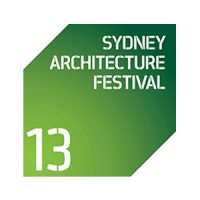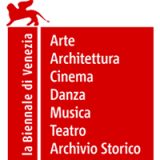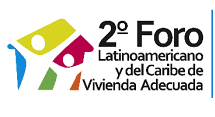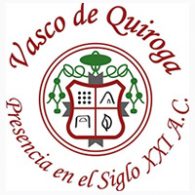Rural Habitat
More than a house design
Enhances community wealth
Health and technological progress
Respects cultural and traditional ways of life.
RURAL HABITAT
BY MOWA (MOBILE WORKSHOP ARCHITECTS) + NGO VASCO DE QUIROGA PSXXI
‘Rural Habitat’ was born out of the combined visions of MOWA (Mobile Workshop Architects) and NGO Vasco de Quiroga PS XXI (VQPSXXI).
MOWA (Mobile Workshop Architects) have undertaken research to develop dignified, low budget housing for a number of years. After seeing current government designs for low budget housing, MOWA decided to creatively re-imagine rural dwelling design on similarly tight budgets.
In 2012, VSQPSXXI was selected as a top finalist in the Mexican initiative award known as ‘Iniciativa Mexico’, for their development plan which implements new technologies assisting rural Mexican communities to offset their carbon footprint. A key component of this plan included the introduction of a new biomass stove, that reduces the amount of wood required and discharges stove fumes away from its users. VSQPSXXI joined forced with MOWA, their resulting collaboration formed ‘Rural Habitat’.
‘Rural Habitat’ started as an initiative to improve living conditions for people in remote Mexican communities. The project was designed to dignify and raise quality of life for rural Mexicans by providing affordable, low cost housing and sanitation. The design concept was literally to give people a roof “over their heads” whilst minimising architectural elements. Consequently the roof curves to become the walls of the house.
‘Rural Habitat’ is more than house design, it is a social development initiative that integrates and enhances community wealth, health and technological progress, enabling people to live in harmony with their environment, while respecting cultural and traditional ways of life.
This project aims to heighten awareness of some of the challenges facing rural and remote Mexican communities and share our architectural and social design solutions.
The ‘Rural Habitat’ project celebrates cultural inheritance and respects the way of life of rural Mexicans. It seeks to improve their lives by constructive and culturally sensitive means, by inducing rather than imposing ideas. This project uses simple construction and logistic systems; pursuing highly creative and innovative methods to observe extremely low budgets.
We believe it’s important both at an individual and community level, not just to fulfil physical necessities but that it is equally essential to care for peoples metaphysical needs.
The project has developed over time evolving new ideas and overcoming hurdles in the design and construction process to strengthen the development platform. Finally, we hope this project inspires others to take on the challenge of formulating new ideas and sustainable utopias, which break traditional paradigms.
Before MOWA (Mobile Workshop Architects) became involved with this project, we realised that rural Mexicans where abandoning the houses given to them by National Social Programs. It prompted us to question why someone with so little, would abandon the gift of a new house, when they have nothing.
Shouldn’t any house be enough? When we looked at the houses these families were given, the answer becomes clear… They had received a room, not a home.
When we asked ourselves if we could live in one of these houses, the answer was no.
This question led to another. How could a designer expect others to live where they could not?
People expect a home to provide more than shelter from nature. Rich or poor, living in the city or in the woods, we’re all different yet alike, living personal but connected existences, sewn together by the bonds of family, community and tradition.
Home provides more than a dwelling it is also a communal and personal space, protecting our physical needs as well as metaphysical necessities.
We became involved with these communities after we were invited. Together, we tried to better physically embody their desires for a soulful and protective home.
We don’t design buildings we design places,
We don’t design forms we design experiences,
We don’t design styles we design atmospheres,
We don’t design for people, we design with communities.
The main vision is:
-To generate wealth by inducing productive projects that follows the skills of the people within the community.
-To re-establish balance with nature through the use of sustainable technology.
– To respect tradition and culture by implementing designs and proposals that values the ways of the community rather than imposing our external ideas upon them.
Our initiative suggests a variety of productive projects that harness existing skills and are an opportunity to adopt new ones.
One example is “PATRULLITAS ECOLOGICAS” (environmental patrols) which generates valuable fertiliser through organic matter that rots within collected PET bottles that are then sold separately to the fertiliser. The whole project is done with the assistance of the community children thus forming environmental consciousness for the younger generations.
Helping local artisans through the Internet to get a fair value for the work is another example of such projects or making available to other their new rural habitat bathroom for a small fee.
We have conducted extensive research and site visits to many rural Mexican communities through their ‘Rural Habitat’ project. Their findings reveal a number of issues associated with ‘traditional’ government housing:
These include:
- Inadequate roofing. It is not uncommon for cardboard, plastic or pieces of metal sheeting to be used, or in the worst cases asbestos sheeting.
- Poor insulation means many people are only partly protected from the weather. Walls are often built from unmilled planks or roughly cut tree trunks, allowing drafts and water to leak into houses.
- House construction is structurally unsound, leaving homes vulnerable to extreme weather such as hail, strong winds, and flooding.
- Bathroom facilities are often non- existent and unsanitary, lacking a toilet, shower or basin. People commonly wash themselves from a bucket and share a communal latrine.
- Inadequate kitchen facilities mean people are forced to cook over unventilated internal firewood stoves, which fill their houses with smoke, contributing to chronic respiratory illness and eye problems.
- Overcrowding and lack of privacy. Typically a 25 sq m one bedroom dwelling may house as many as 8 family members.
- Incomplete and uninsulated flooring results in poor health for many people who sleep on the floor of their homes
- Inadequate partitioning and limited space forces people to live in close proximity with unpenned farm animals, resulting in further health hazards.
- Poor natural lighting and an average ceiling height of only 2.2m results in dark housing.
- Insufficient storage facilities.
‘Rural Habitat’ designs bioclimatic self-sufficient homes.
-
- 6 ‘Rural Habitat’ kit homes can fit on a single truck
- The self-construction homes take 15-18 days to complete. No formwork is needed.
- Home owners can select colours and customize the number of windows
- Ceiling height at the apex is 3.4 m
- The structure is designed to be self-supporting minimising the impact of storm winds, floods and earthquakes
- Internal roof hooks provide a storage contingency that enables possessions to be kept dry despite light flooding
- Concrete slab floors are finished with brick tiles
- Coloured Ochre mixed with waterproof cement render minimises paint maintenance for interior and exterior walls
- ‘Rural Habitat’ homes have 2 bedrooms alleviating overcrowding and providing some privacy
- Internal bathrooms include a water tank, running toilet, shower, and a basin.
-
- Internal kitchen are equipped with new biomass stoves including flue, providing internal heating and ensure fumes are exhausted outside.
- A boiler powered by heat recycled from the stove heats running water for showering and cleaning.
- Additional shelving creates greater storage space.
- Pens partition farm animals from the inhabitants.
- External space allocation for harvest drying.
- Solar panel to run 60 watt LED lights
- Glass Blocks or water filled PET bottles provide cost effective skylights
- Internal cross ventilation design negates the need for air conditioning
- 17-litre water cistern and rainwater collection channels
- Composting toilet
- A ‘Rural Habitat’ home inclusive of all services and technology can be built for 120,000 MXN, less than 7,000 USD
2012 Top finalist of the TV innovation program “Iniciativa Mexico” (cash price awarded)
2013 Participated at Sydney Architecture Festival
2013 Exhibited at Customs House, Sydney Australia
2014 Published in built, unbuilt and imagined Sydney by Dr. Anuradha Chatterjee
2015 Exhibited at 2nd Latin American and Caribbean forum on adequate house, Monterrey Mexico
2020 Lecture at Caroma, Sydney Australia
Rural Habitat exhibition at Customs House Sydney was supported by the following organisations.
We would like to express our immense gratitude to all the people who have believed in our project and have contributed to the making of this exhibition :
Media wall technical assistance: Peter Murphy
Media wall design: Jacob Smeke Levy
Watercolours: Mike G. Counahan + Taller Aldaco 4
Models: Antoinette Cano
3d print models: Isaac Smeke Jaber
Photography: Pablo Salazar Solis + Isaac Smeke Levy
Video Editions: Pamela Orozco
Cubby house: USYD architecture faculty/atsc + Melinda Wimborne + Cailin Maas + USYD
Architecture students with special thanks to:
Elise Joy Vollugi
Virginia Lui
Katherine Bylett
Tifanny LiewJ
un Yi Ong
Jun Ming
Rio Murase
Hao Qi Gong ( Alison)
Yuxiao Wang ( Natalie)
Susana Alarcon
Stephanie Gottis-Graham
Ashhar Ateeq Khan
Jonathan Irawan
Shuang Wu















